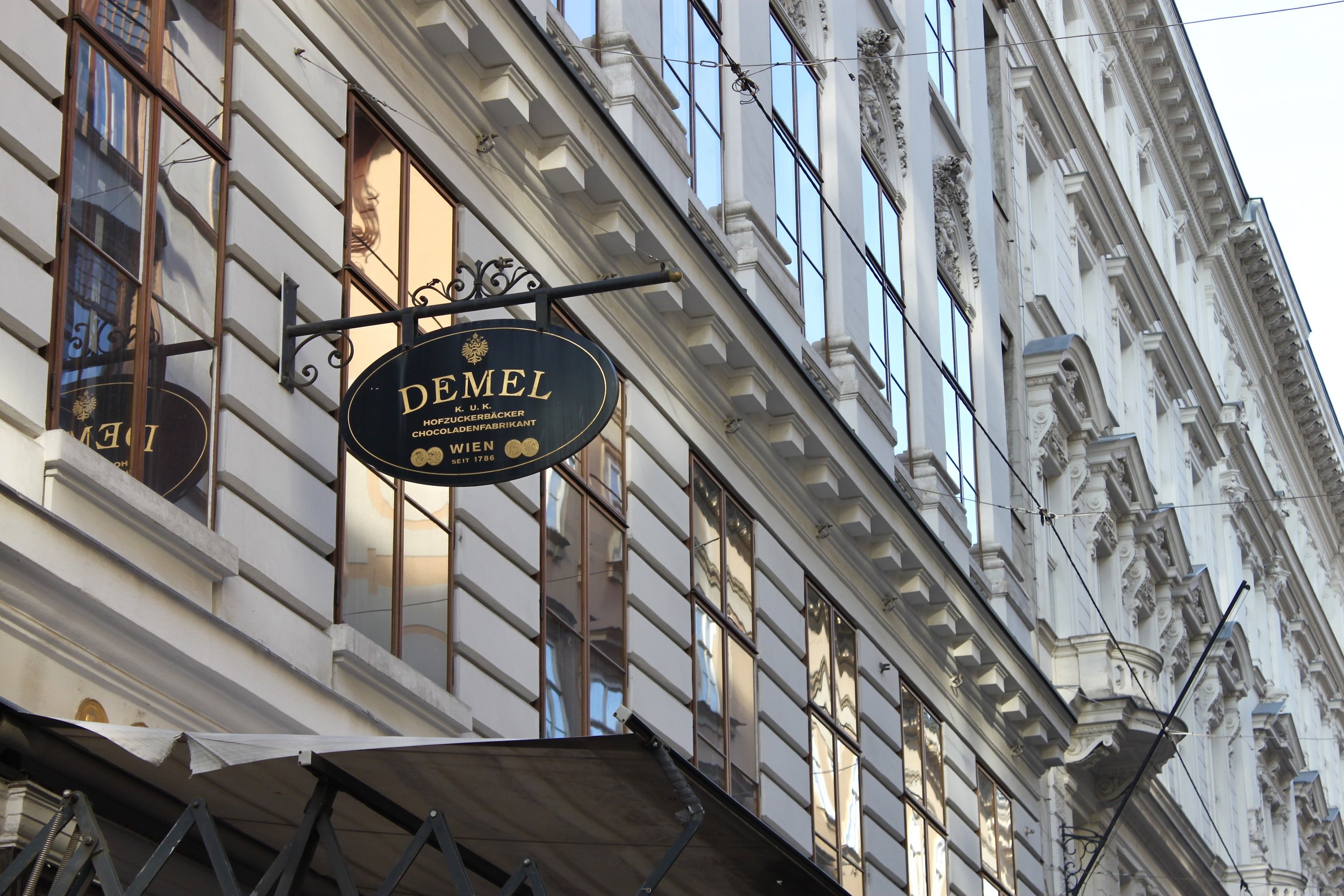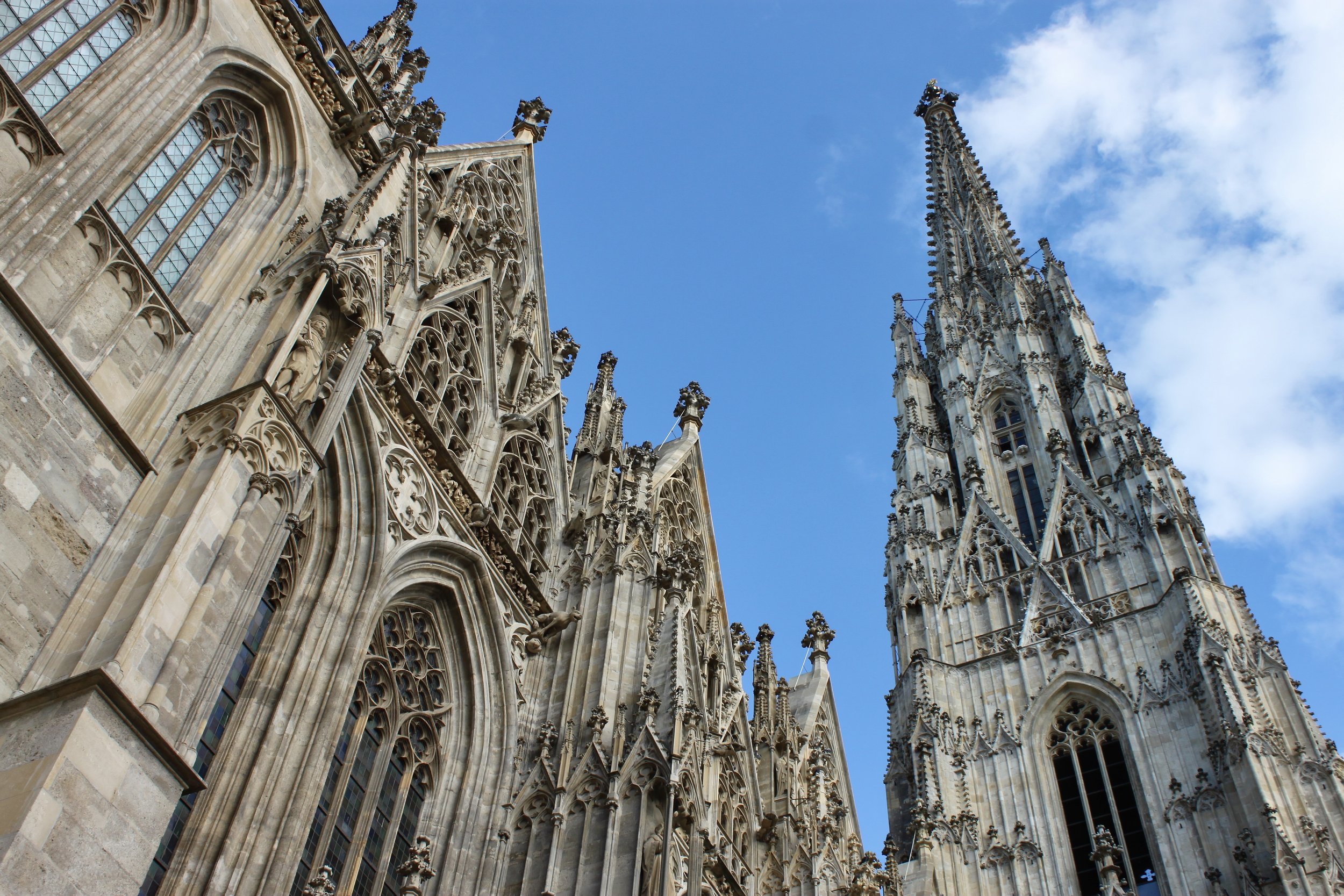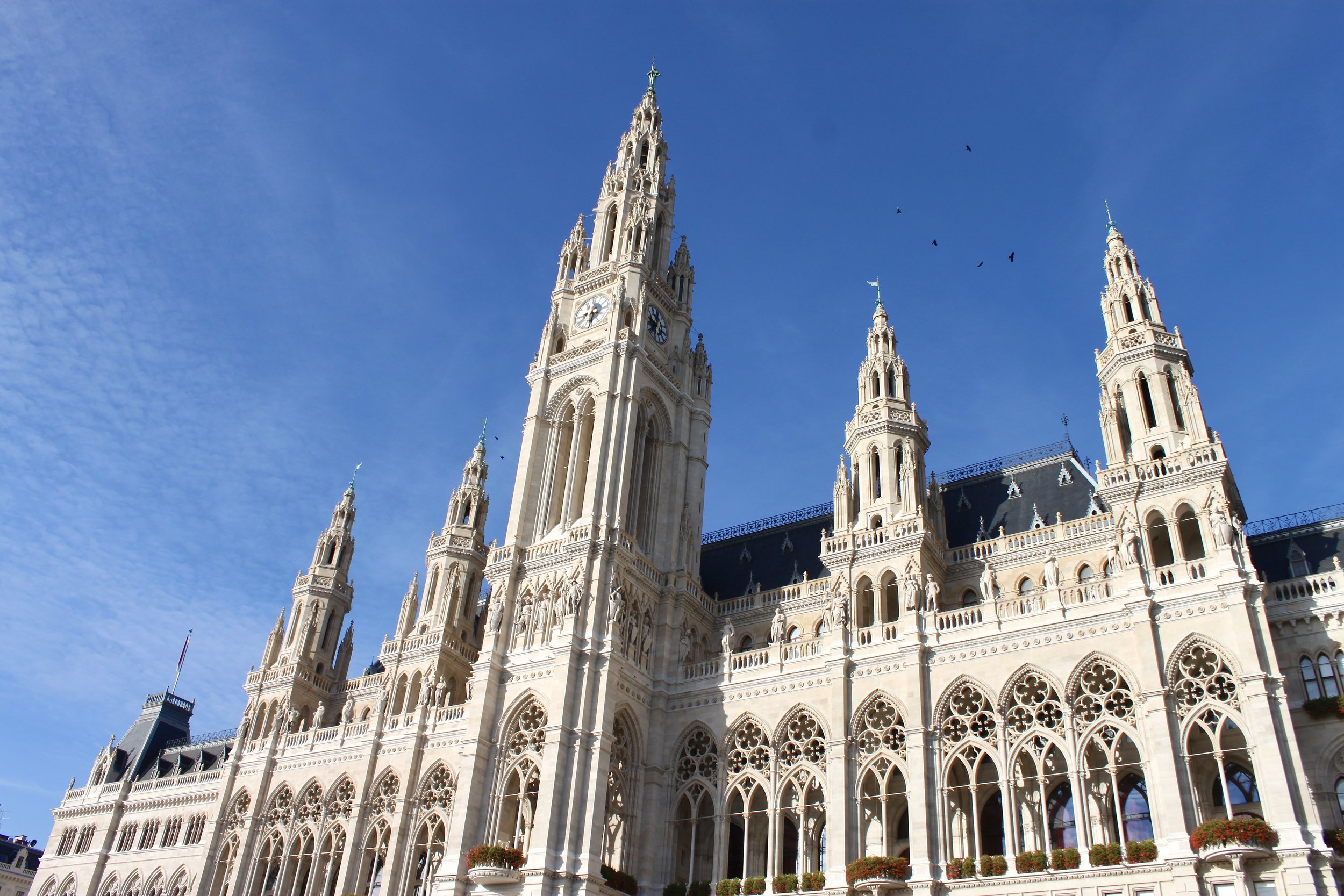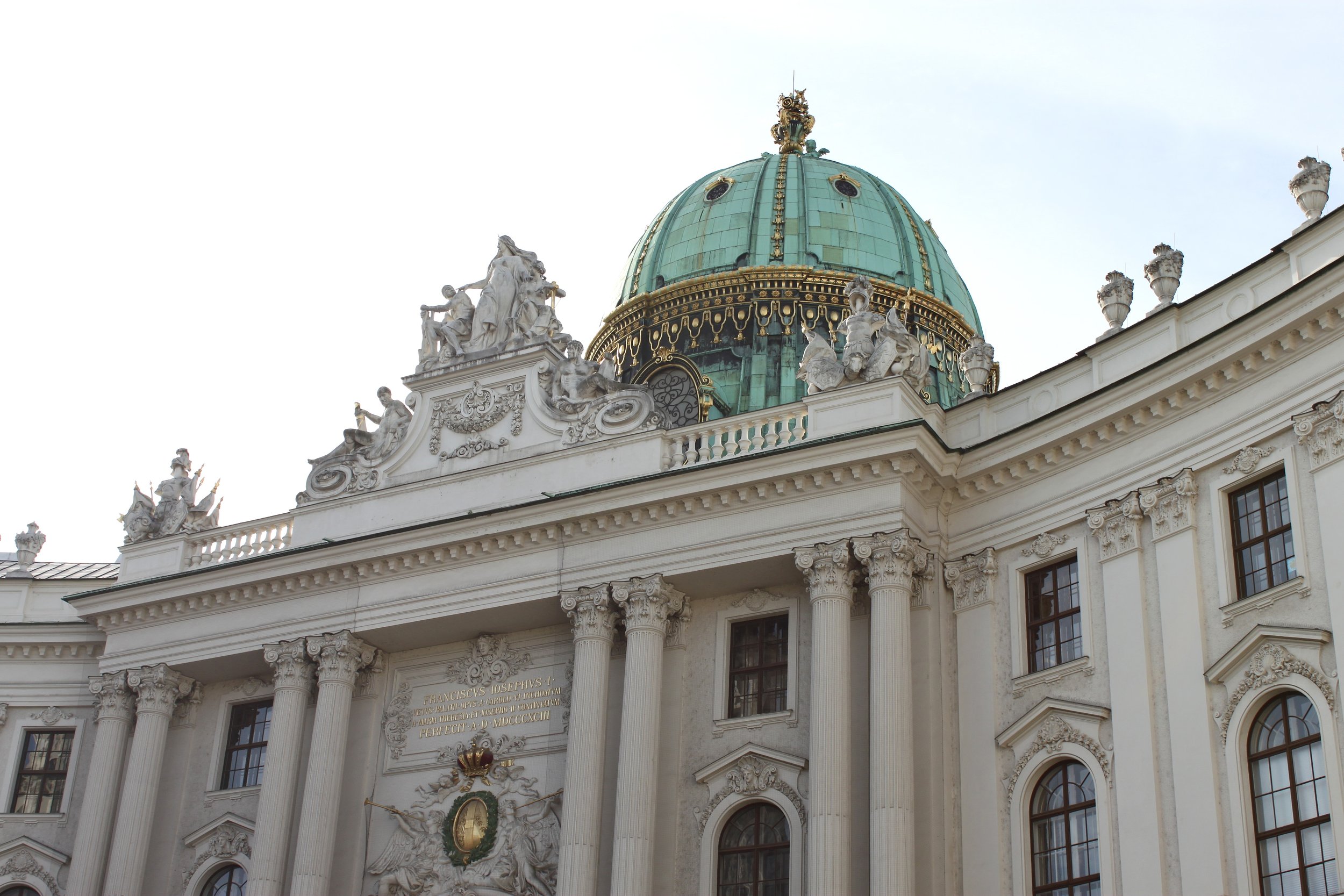VIENNA MUST SEES
Viennese Cafés
In 2011, the “Viennese Coffee House Culture” was officially listed as “Intangible Cultural Heritage” by UNESCO, and you’ll soon see why! Gorgeous cafés with marble-topped tables, Thonet chairs, and international newspapers, are a staple in Vienna. I do not believe you can make a wrong choice when choosing between iconic Viennese cafés, but click here to read about the three we went to while in Vienna!
Demel: one of the cafés we went to
St. Stephan’s Cathedral
Constructed many moons ago, this first Romanesque church was said to have been started in 1137. You can tour the cathedral on your own or take a guided tour, which is offered in German and English, or you can use an audio guide in your native language. You can also journey underground to the catacombs, but note that you can only do so as part of a guided tour. In addition, the North and South Towers are worth a visit, but if you had to choose only one, I’d climb up the South Tower! (The North Tower is unfinished, while the South Tower provides incredible views of Vienna, making St. Stephan’s Cathedral the tallest church in Austria and amongst the tallest in the world!) You will need to walk up 343 spiral staircase steps. The same staircase that brings you up, also brings you down. This means that depending on how crowded it is, you could wind up having to squish yourself against the walls multiple times as people are ascending while you are descending and vice versa. Tickets are purchased with cash only on site!
St. Stephan’s Cathedral
Classical Concert
Vienna is strongly associated with music, as many composers wrote legendary tunes within these city walls. Joseph Haydn started out in Vienna as a choir boy at St. Stephan’s Cathedral. Anton Bruckner, known by many as “God’s Musician,” lived and taught in Vienna. Franz Schubert – having been born and died in Vienna – created most of his work in the city. Wolfgang Amadeus Mozart once described his “irrational affection” for Vienna, while Ludwig van Beethoven wrote, “perhaps heaven will permit me not to have to give up Vienna as my permanent abode.” Therefore, in honor of these artists, it is only fitting that you go to a concert of some kind to hear classical music being played! We went to St. Anne’s Church to hear Beethoven and Haydn beautifully honored by a string quartet. The church was a lovely baroque backdrop, and we highly recommend this concert!
inside St. Anne’s Cathedral, where we listened to classical music
Vienna Opera House
Continuing with Vienna’s love of music, head to the Vienna Opera House! If you do not have a lot of time, you can simply walk past to admire the exterior, which is the original structure that has been preserved since 1869. You can also enjoy an opera, sitting in one of the 1,709 seats, 4 wheelchair spaces, 4 wheelchair companion seats, or even standing in one of the 567 allotted spaces. Lastly, if you have the time but just don’t want to see a performance, you can take a tour of the Opera House. This tour lasts for 40 minutes and is offered in both German and English. Whether you are there for a tour or for a show, please purchase your tickets in advance.
outside the Vienna Opera House
Rathaus & Rathauspark
Rathaus, or Vienna’s City Hall, was designed by Friedrich Schmidt, and was constructed from 1872 to 1883. The building has a gorgeous gothic exterior and welcomes people free of charge for German-speaking guided tours on particular days (check their website for the most up to date information). The Vienna City Hall is not all touristy, as more than 2000 people work in the building! Venture outside to Rathauspark that is open 24/7!
Rathaus
Sisi Museum
The Sisi Museum is situated within Hofburg Palace, which was once the imperial seat of the Habsburg dynasty. This palace was the winter residence, while Schönbrunn Palace was the summer residence (and one of our must sees, mentioned down below!) A part of the palace is dedicated to Sisi, who at just 16 years old became the beguiling Empress of Austria until her untimely death at the hands of an Italian anarchist in Geneva. You can learn more about her interesting life (and how she got her hair to be that long and shiny) at the museum!
outside the Hofburg Palace, which houses the Sisi Museum
Austrian National Library
The Austrian National Library is the largest library in Austria, also residing in the Hofburg Palace. It was originally called the Imperial Court Library, but after the demise of the Habsburg Monarchy, the name was changed. If you love the library in Beauty and the Beast, I’d like to call out the 18th century baroque-adorned State Hall, where you will see a massive collection of over 200,000 historical books on display!
The State Hall
Volksgarten
Volksgarten is a public park that is a part of Hofburg Palace. As time went on and there was no need for city fortifications, more land was allocated to the park. The majority of people think of The Rose Garden when they think of Volksgarten. In spring and summer, the roses greet tourists and locals alike with an abundance of color. Even at the start of October when we were in Vienna, we saw gardeners planting flowers of different varieties and colors to offer bits of nature all year round! Parallel to the Rose Garden is a lovely memorial site to honor Empress Elisabeth (Sisi). This area of the park is not as crowded, and it is a nice area to stop and relax!
Volksgarten
Schönbrunn Palace
As mentioned above, Schönbrunn Palace was the summer residence of the Habsburg monarchy. When thinking of places you MUST see in Vienna, this palace is absolutely stunning. However, if you do have the time to take in two palaces, I would add Belvedere Palace to your list! If you only have time for one though, Schönbrunn is the place to be. Enjoy the palace, Privy Garden, and the Orangery Garden either early in the morning or in the late afternoon, when crowds are at a minimum.
Schönbrunn Palace








